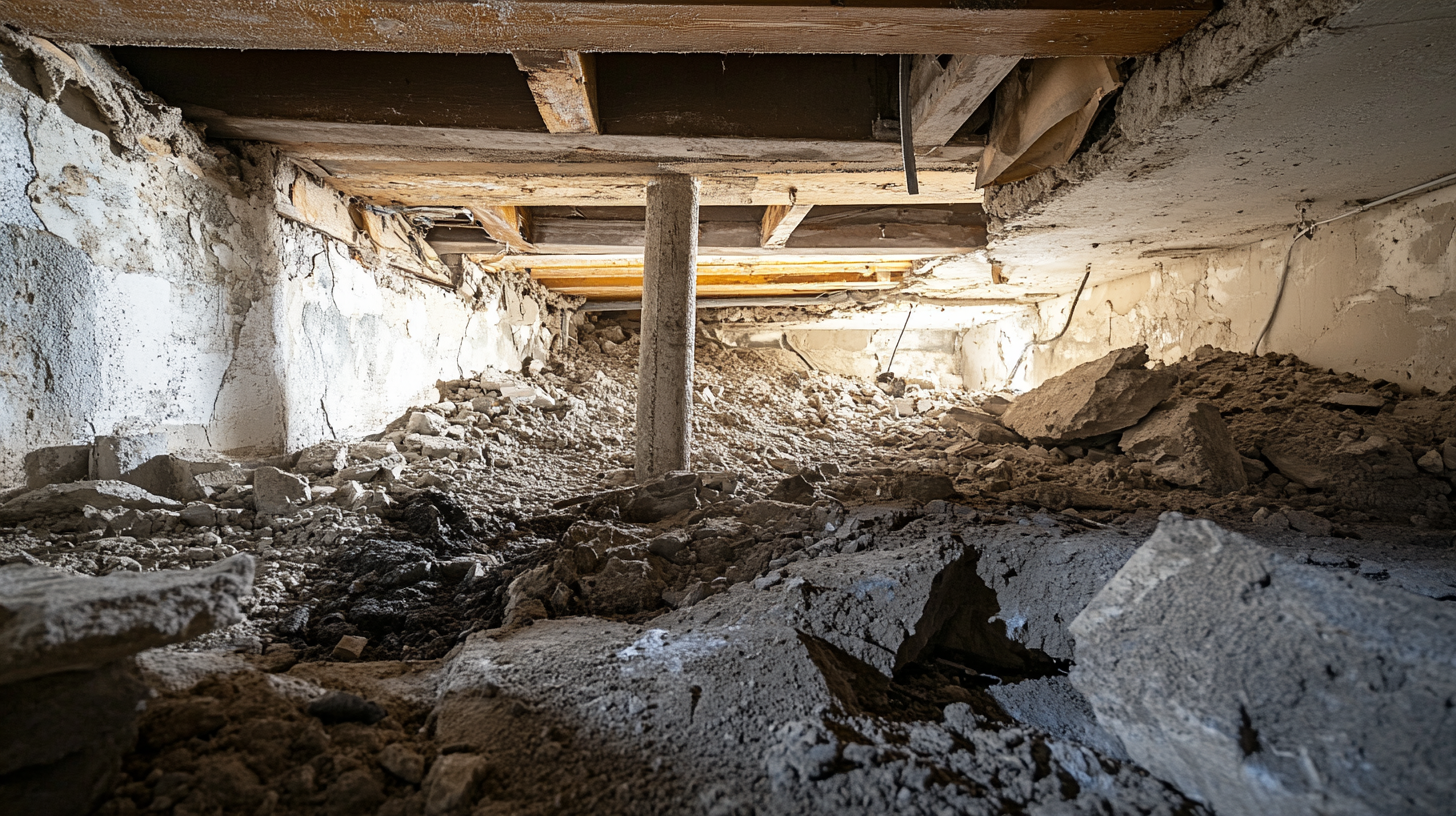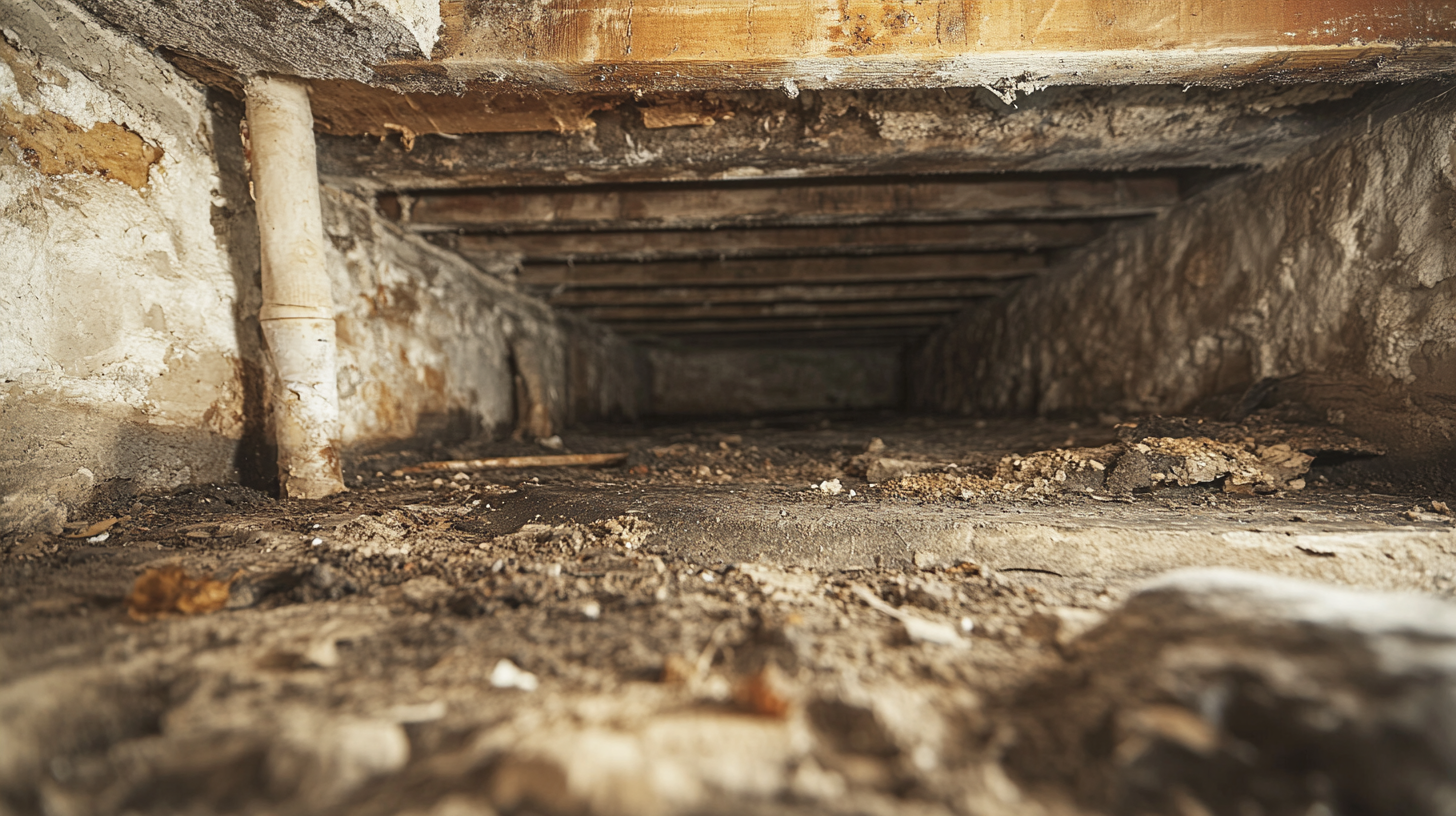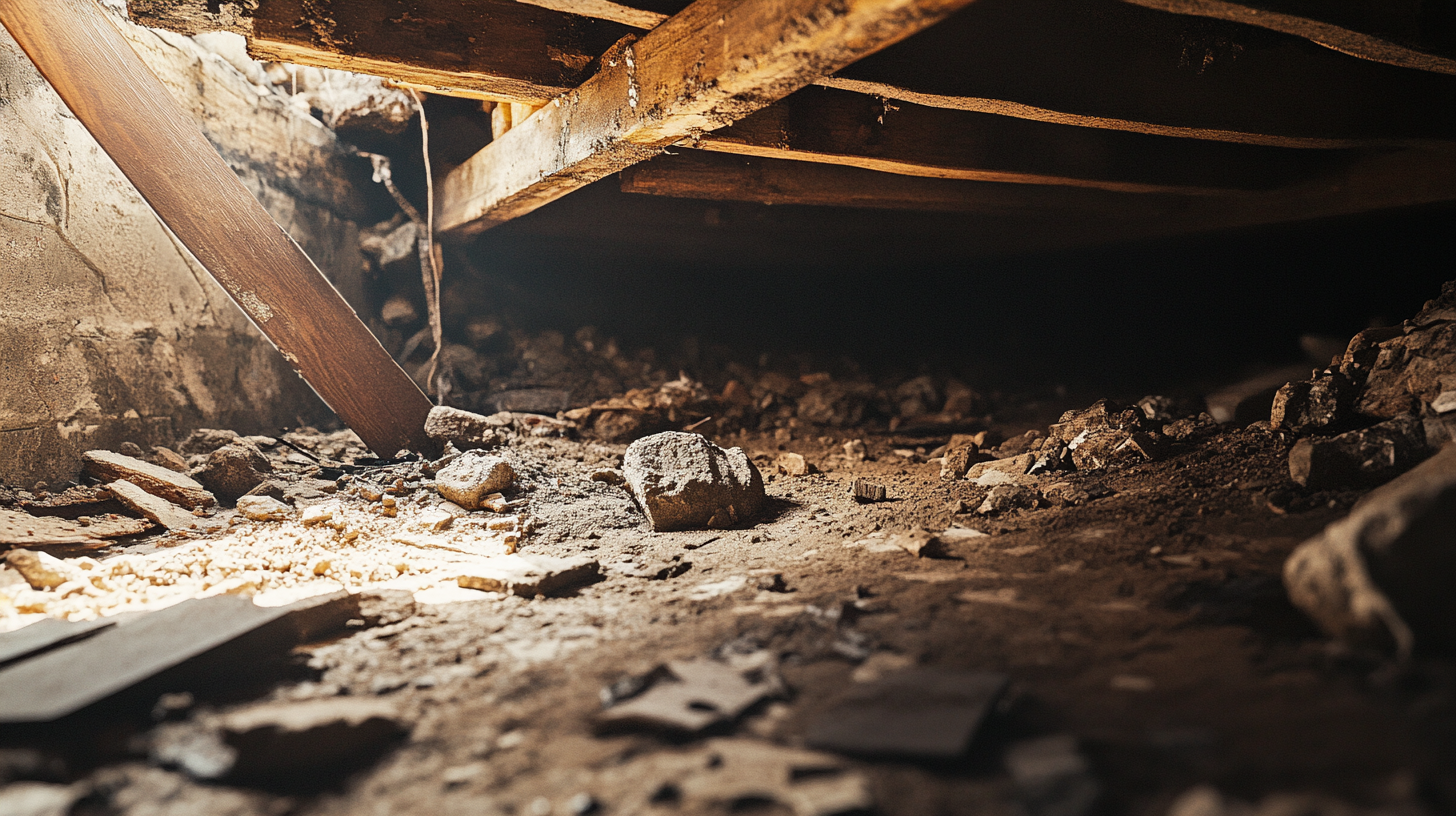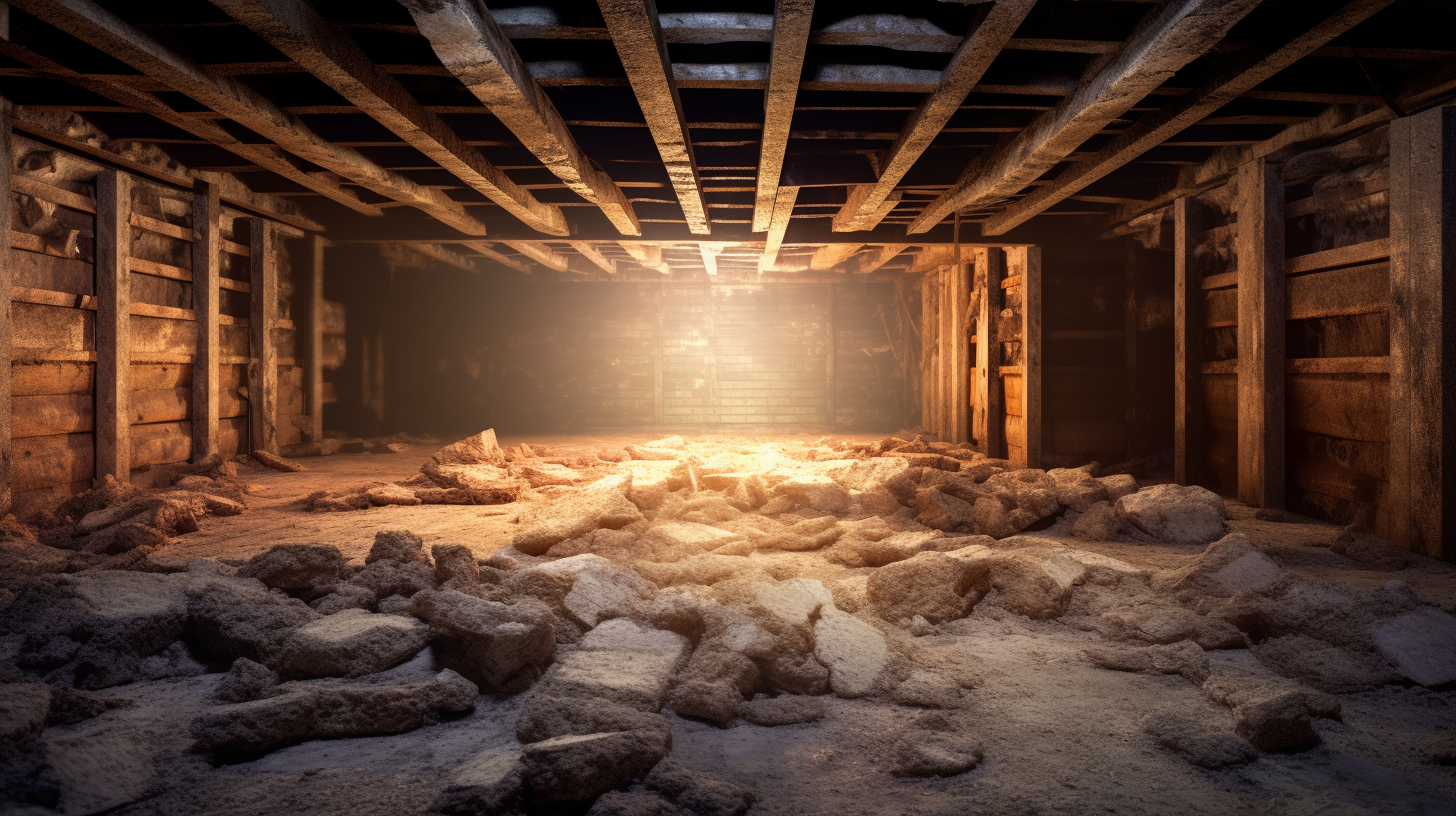Beneath the floors of our homes lies a critical yet often overlooked component of residential well-being—the crawl space. This hidden area, when properly maintained, plays a pivotal role in preserving the structural integrity and ensuring the air quality of our living spaces. At the heart of effective crawl space maintenance lies a simple yet powerful feature: the crawl space vent. This blog delves into the crucial importance of crawl space vents in home maintenance, exploring how these seemingly modest fixtures contribute significantly to sustaining a healthy home environment.
Crawl space vents serve as the lungs of your home, facilitating the essential exchange of air that helps to regulate moisture levels beneath your living spaces. In environments where humidity can become a silent adversary, the role of these vents cannot be overstated. By allowing air to circulate, crawl space vents work tirelessly to prevent the accumulation of excess moisture—a key culprit behind mold growth, wood rot, and the attraction of pests. These issues, if left unchecked, can compromise not only the air quality within your home but also its very foundation.
Through a comprehensive exploration, we will uncover the mechanisms by which crawl space vents operate, shedding light on their contribution to deterring moisture-related problems and promoting a healthier indoor atmosphere. From the principles of natural ventilation to the integration of mechanical systems for enhanced moisture control, understanding the function and maintenance of crawl space vents is essential for any homeowner committed to preserving their home's health and longevity.
Join us as we navigate the ins and outs of crawl space ventilation, offering insights and practical advice on how to optimize these critical components for the well-being of your home. Because when it comes to maintaining a healthy living environment, the significance of crawl space vents cannot be overlooked.
Understanding Crawl Space Ventilation
Crawl space ventilation plays a pivotal role in maintaining the structural integrity and air quality of your home. It's a critical aspect of home maintenance that, when managed properly, can prevent a host of issues related to excess moisture and poor air circulation. This guide dives into the purpose of crawl space vents and explores the various types available, along with their maintenance requirements, to help homeowners make informed decisions about their ventilation systems.
The Purpose of Crawl Space Vents
Crawl space vents are designed to facilitate air exchange between the crawl space and the outside environment, serving two main functions:
Moisture Control: By allowing outside air to circulate through the crawl space, vents help to reduce humidity levels. This is crucial for preventing the accumulation of moisture that can lead to mold growth, wood rot, and attract pests. Proper ventilation ensures that moisture is not trapped within the crawl space, safeguarding the home's foundation and structural components from moisture-related damage.
Air Circulation: Effective air circulation is essential for maintaining a healthy living environment. Crawl space vents help to expel stagnant air that may contain pollutants, odors, or harmful gases like radon, replacing it with fresher outdoor air. This process helps to improve the overall air quality within the home, contributing to a healthier indoor atmosphere for the occupants.
Types of Crawl Space Vents
There are several types of crawl space vents available, each with its specific features and maintenance needs:
- Manual Vents: These are basic vents that can be opened or closed manually. They require regular inspection to ensure they are clear of obstructions and functioning properly. During colder months, manual vents may need to be closed to prevent freezing temperatures from affecting the crawl space, and then reopened in warmer months to allow for ventilation.
- Automatic Vents: Equipped with a thermostat or humidistat, automatic vents open and close based on temperature or humidity levels. They offer a more hands-off approach to ventilation but should be checked periodically to ensure the sensors are working correctly and that the vents are opening and closing as intended.
- Vent Covers and Doors: Some crawl spaces may use vent covers or doors for access and additional ventilation control. These should be inspected for damage, proper fit, and signs of leakage. Ensuring that these components are in good condition helps maintain the effectiveness of the crawl space ventilation system.
- Powered Vents and Fans: For enhanced air circulation, some systems incorporate powered vents or exhaust fans. These require more detailed maintenance, including checking electrical connections, ensuring the fan blades are clean and free of debris, and verifying that the unit is operating efficiently.
Regular maintenance of your crawl space vents, regardless of the type, is essential for ensuring they continue to perform their vital functions effectively. This includes cleaning vents to remove dust and debris, inspecting for damage or wear, and making necessary adjustments or repairs to keep the ventilation system in optimal condition.
Setting Up a Maintenance Routine for Crawl Space Ventilation
A well-maintained crawl space ventilation system is crucial for preserving the structural integrity of your home and ensuring a healthy indoor environment. Regular maintenance prevents moisture-related issues, such as mold growth and wood rot, and ensures the system operates efficiently year-round. This guide provides a structured approach to setting up a maintenance routine, including how often to perform checks and how to tailor your maintenance to different seasons.
Determining Maintenance Frequency
The frequency of maintenance for crawl space vents is key to ensuring their effectiveness and longevity. Here are some guidelines on how often these components should be checked and maintained:
- Bi-Annual Checks: At a minimum, inspect your crawl space vents twice a year, ideally during the spring and fall. These inspections should assess the physical condition of vents, screens, and other components for any signs of damage, blockage, or wear.
- After Extreme Weather: Following severe weather conditions, such as heavy rain, snow, or high winds, perform additional inspections to ensure vents have not been blocked or damaged. This is crucial for preventing sudden moisture issues or compromised air flow.
- Ongoing Monitoring: Keep an eye on the humidity levels within your crawl space, especially if you have a hygrometer installed. Significant changes in humidity may indicate a need for more immediate maintenance or adjustments to your ventilation system.
Seasonal Maintenance Tips
Tailoring your maintenance routine to accommodate the changing seasons can significantly enhance the performance of your crawl space ventilation system:
- Spring: Clear any debris that has accumulated around vents during the winter months. Check for and repair any damage to vent screens or covers to prepare for the increased humidity of summer. This is also an ideal time to ensure your vapor barrier is intact and covering the crawl space floor properly.
- Summer: Focus on ensuring that vents are open and unobstructed to maximize air flow and manage humidity levels. Consider the use of a dehumidifier if humidity levels remain high despite adequate ventilation.
- Fall: Prepare for colder weather by inspecting the insulation around your crawl space and ensuring that vents are clear of leaves and debris. In areas where winter temperatures drop significantly, plan for the adjustment of vent covers or the installation of insulation around pipes to prevent freezing.
- Winter: In climates where temperatures fall below freezing, evaluate the need to close vents or use insulated covers to reduce the risk of frozen pipes, while still monitoring for adequate air flow and humidity control. Remember, some ventilation should be maintained to avoid moisture buildup.
By establishing a regular maintenance routine and adjusting your approach based on seasonal needs, you can ensure that your crawl space ventilation system remains effective throughout the year. Regular checks and timely maintenance not only prevent costly repairs but also contribute to a healthier and more comfortable home environment.
Step-by-Step Maintenance Process for Crawl Space Ventilation
Maintaining your crawl space ventilation system is essential for preserving the health of your home. A well-ventilated crawl space prevents moisture buildup, deters mold growth, and helps maintain a stable foundation. This guide outlines a step-by-step process for conducting inspections and cleaning vents, ensuring your ventilation system operates efficiently.
Conducting Inspections
Regular inspections are crucial for identifying potential issues before they escalate. Here’s how to perform thorough inspections for signs of damage or blockage:
- Schedule Regular Inspections: Aim to inspect your crawl space ventilation system at least twice a year, ideally in the spring and fall, to address any seasonal impacts.
- Visual Check: Begin with a visual inspection of all accessible parts of your crawl space, including vents, fans, and ductwork. Look for any signs of damage, such as cracks, rust, or wear, that could affect the system's performance.
- Identify Blockages: Check for any obstructions that could impede airflow, including debris, nests, or overgrown vegetation covering exterior vents. Inside, look for accumulated dust, cobwebs, or stored items blocking vents.
- Assess Moisture Levels: Look for signs of excessive moisture, such as condensation on pipes, damp insulation, or water pooling. High moisture levels can indicate inadequate ventilation.
- Check for Pests: Be on the lookout for evidence of pest infestations, such as droppings or damaged insulation, which can also block vents and reduce airflow.
Cleaning and Clearing Vents
Ensuring your vents are clean and clear is vital for maintaining unobstructed airflow. Follow these detailed instructions for effective cleaning:
- Prepare Your Tools: Gather necessary cleaning supplies, such as a vacuum with a hose attachment, soft-bristled brushes, and protective gloves.
- Remove Debris: Carefully remove any large debris by hand from around exterior vents. Use a soft brush to gently clear away cobwebs, leaves, and other obstructions.
- Vacuum Vents: Use the vacuum's hose attachment to suction out dust and smaller debris from inside the vents. Be thorough but gentle to avoid damaging the vent covers or screens.
- Clean Vent Covers: If possible, remove vent covers and wash them with mild soap and water to remove dust and grime. Allow them to dry completely before reinstalling.
- Inspect and Repair: While cleaning, inspect vent covers and screens for any damage. Replace or repair damaged components to ensure optimal functionality.
- Monitor Results: After cleaning, monitor the airflow and humidity levels in your crawl space to ensure the maintenance has effectively improved ventilation.
By following this step-by-step maintenance process, you can ensure your crawl space ventilation system remains effective in preventing moisture-related issues and maintaining a healthy home environment. Regular inspections and cleaning are key components of a proactive maintenance routine that can save you from costly repairs and extend the lifespan of your ventilation system.
Addressing Common Vent Issues
Effective crawl space ventilation is crucial for maintaining a healthy home environment by preventing moisture buildup, mold growth, and ensuring air quality. However, vents can encounter issues such as blockages and damage that compromise their functionality. This guide outlines practical strategies for dealing with these common vent issues, ensuring your crawl space remains well-ventilated and free from moisture-related problems.
Dealing with Blockages and Obstructions
Blockages in crawl space vents can significantly impede airflow, leading to increased humidity and potential moisture issues. Here are strategies for identifying and removing these blockages:
- Regular Inspections: Conduct routine inspections of your crawl space vents to check for any signs of blockage. Look for debris, such as leaves, dirt, spider webs, or nests that could obstruct airflow.
- Use Appropriate Tools: A vacuum with a hose attachment can be effective for removing loose debris from vent openings. For more stubborn blockages, a soft brush or a vent cleaning tool may be necessary to gently clear away obstructions.
- Exterior Checks: Ensure the exterior of the vents is clear from vegetation, soil buildup, or other materials that could block air intake or exhaust. Trim any plants or shrubs that are too close to the vents.
- Maintain Clear Surroundings: Keep the area around crawl space vents clear of stored items, construction materials, or garbage that could restrict airflow.
Repairing Damaged Vents
Damaged vents not only affect ventilation efficiency but can also allow pests and moisture into your crawl space. Here are tips on how to repair or replace damaged crawl space vents:
- Assess the Damage: Determine the extent of the damage to your vents. Minor issues, such as loose screws or slightly bent frames, can often be repaired, while more significant damage may require replacement.
- DIY Repairs: For minor repairs, such as tightening screws or straightening bent frames, use appropriate tools and materials. Ensure that vent covers are securely attached and seal any gaps around the vent frame.
- Replacing Vents: If a vent is too damaged to repair, replacing it may be the best option. Measure the vent opening accurately and purchase a suitable replacement that matches the size and type. Remove the old vent carefully, install the new one according to the manufacturer's instructions, and ensure it's properly sealed and secured.
- Consider Professional Help: For complex repairs or replacements, especially if structural modifications are needed, consider hiring a professional. An experienced contractor can ensure the job is done safely and effectively.
By actively dealing with blockages and addressing damaged vents promptly, homeowners can maintain effective crawl space ventilation, protecting their homes from moisture-related issues and ensuring a healthy living environment. Regular maintenance and timely repairs are key to the longevity and efficiency of your crawl space ventilation system.
Enhancing Ventilation Efficiency
A well-ventilated crawl space is crucial for maintaining the structural integrity of your home and ensuring a healthy living environment. Over time, advancements in ventilation technology and a deeper understanding of home air quality have led to new strategies for enhancing ventilation efficiency. This guide explores how upgrading your vents can lead to better efficiency and effectiveness, and how balanced ventilation contributes to the overall health of your crawl space.
Upgrading Your Vents
Upgrading your crawl space vents can significantly improve the airflow and moisture control within this critical area of your home. Consider these upgrades for better efficiency and effectiveness:
- Automated Vents: Consider replacing manual vents with automated ones that open and close based on temperature or humidity levels. This smart technology ensures that your crawl space is ventilated optimally without manual intervention, adapting to changing environmental conditions for better moisture control.
- Energy-Efficient Vents: Look for energy-efficient vent designs that minimize heat loss during colder months while ensuring adequate ventilation. These vents can help maintain a more consistent temperature in your crawl space, reducing the risk of condensation and mold growth.
- Improved Vent Covers: Upgrade to vent covers that provide better protection against pests and debris, while allowing for adequate air flow. High-quality vent covers can enhance ventilation effectiveness and prevent blockages that impede air circulation.
- Ventilation Fans: Installing ventilation fans can boost air exchange in crawl spaces with poor natural airflow. Fans can be particularly effective in larger crawl spaces or those with limited vent openings, ensuring that moist air is actively expelled.
Balancing Ventilation with Overall Crawl Space Health
Ensuring that your vent maintenance and upgrades contribute to the overall health of your crawl space involves a holistic approach to moisture control and air quality:
- Regular Maintenance: Beyond upgrading, regular cleaning and inspection of vents are crucial for maintaining optimal performance. Ensure that vents are clear of obstructions and functioning as intended to support effective ventilation.
- Moisture Barrier Integration: Combine vent upgrades with the installation or maintenance of a vapor barrier on the crawl space floor. This combination prevents ground moisture from entering the crawl space air, complementing the moisture control provided by upgraded vents.
- Monitor Humidity Levels: Use a hygrometer to regularly monitor the humidity levels in your crawl space. This will help you assess the effectiveness of your ventilation strategy and make necessary adjustments to maintain a healthy environment.
- Professional Assessment: Consider consulting with a crawl space or ventilation expert to evaluate your current system and recommend specific upgrades or changes. A professional assessment can ensure that your ventilation strategy is tailored to the unique needs of your home, maximizing efficiency and effectiveness.
By thoughtfully upgrading your vents and adopting a balanced approach to crawl space health, you can enhance ventilation efficiency, prevent moisture-related issues, and ensure a healthier living environment. Regular maintenance, combined with strategic upgrades, is key to achieving and maintaining an optimally ventilated crawl space.
FAQs
-
Signs of vent blockage?
Signs include reduced airflow, increased humidity or moisture in the crawl space, visible mold, and unpleasant odors indicating that vents may be blocked.
-
Best method to clean vents?
Use a vacuum with a brush attachment to gently remove dust and debris from the vent covers. For exterior vents, clear away any vegetation or external blockages.
-
When to replace vent covers?
Replace vent covers if they are damaged, rusted, or no longer fit properly to ensure they effectively protect your crawl space from pests and external elements.
-
Can I seal my crawl space vents?
Sealing crawl space vents is an option in certain climates or as part of a crawl space encapsulation strategy, but it should be done with professional advice to avoid moisture issues.
-
Role of dehumidifiers with vents?
Dehumidifiers complement crawl space vents by actively removing moisture from the air, especially in humid climates or seasons, enhancing overall moisture control.
Contact Trench Guys Today!
Trench Guys will do everything we can to ensure your experience with us is excellent.
Request A FREE Estimate
Request a Free Estimate Form
We will get back to you as soon as possible.
Please try again later.
Checkout Recent Post




Got a Question? We’re Here to Help.
You can arrange an appointment or make an enquiry by phone or email, orget in touch to us via our contact form.
Looking for a reliable and professional company to take care of your crawl space, basement and gutter needs? Look no further than Trench Guys! We have years of experience in the industry and can provide you with top-quality services at a competitive price. Contact us today to get started!
CONTACT INFORMATION
Phone: 478-236-6403
Email: Wedigmiddlega@gmail.com
Address: Macon, GA
Business Hours:
Mon-Fri: 6:00 AM - 5:00 PM
Sat-Sun: Closed
ADDITIONAL INFORMATION
Us Across The Web
Geo
Neighborhoods
Niche
All Rights Reserved | Trench Guys
Privacy Policy | Terms & Conditions | Sitemap



